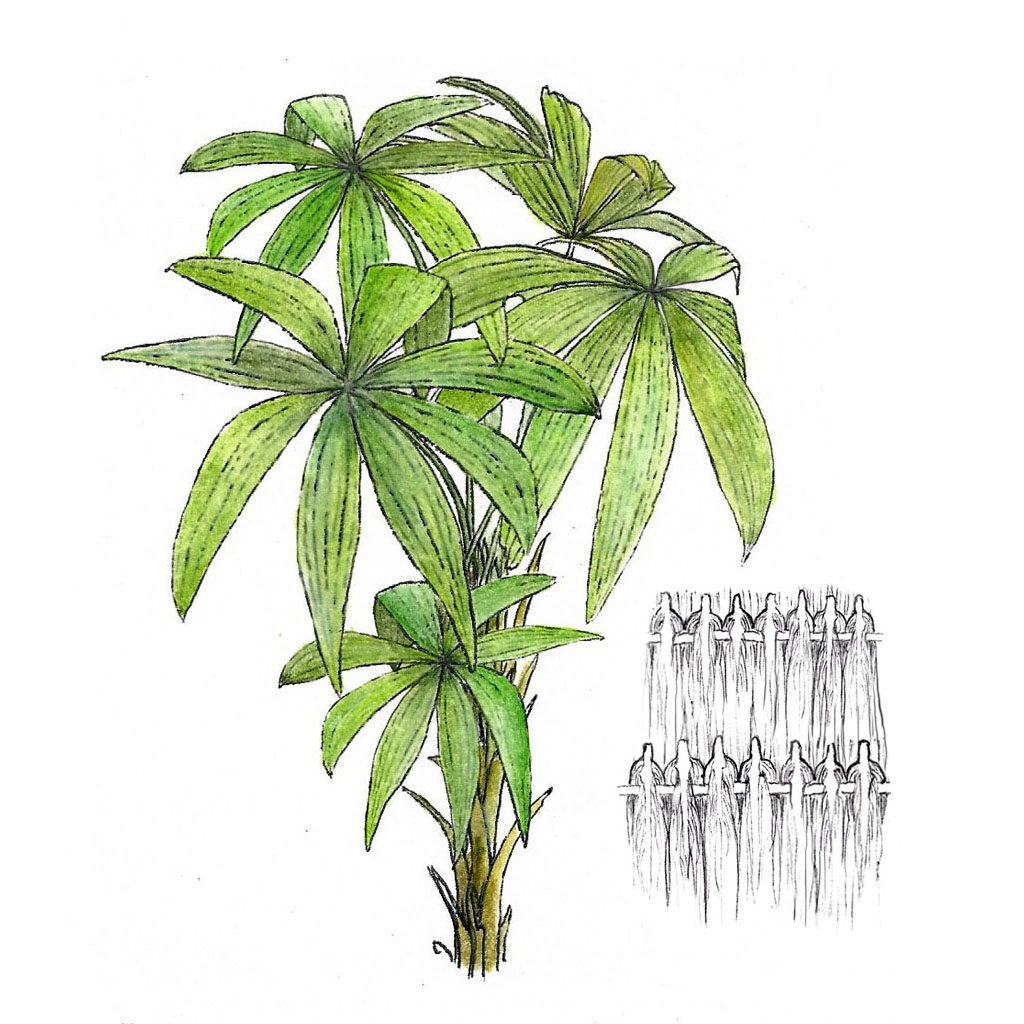Bayleaf/Botán Palm

Bayleaf/Botán Palm – Sabal mauritiiformis
This fan palm is the traditional thatching palm of Belize. The one shown is a young tree, from which fronds can be easily harvested. As it grows older, it becomes a rather large tree and is called the Botán Palm, with dense wood that is sometimes used in building. It’s native to Mexico and Central America, and south through Venezuela and Columbia.
Bayleaf palm thatch roofs were once the standard roof of the Mayan villages of northern Belize. In southern villages, the fronds of the cohune palm were (and are) used, laid parallel and overlapping the long way of the roof line.
For thatching, each bayleaf palm frond is squeezed into a broom-shaped bunch and laced through rafters as shown in the drawing (seen from beneath). If a roof is properly pitched – steep enough for water to drain off quickly – and dense enough, it can last for twenty plus years if it’s well maintained. If the roof is not steep, however, it will rot and disintegrate in short order. You can read more about thatching here.
Belize is a tourist destination, and visitors like to see thatched roofs, so many lodges and resorts have such roofs made by locals from fronds they have harvested from nearby forests. Unfortunately, bayleaf palms have been overharvested, completely cut down instead of leaving some fronds to continue growing, so that they can no longer be found in many areas. As a result, and because of the labor involved in the thatching process, a thatch roof is now more expensive than a typical zinc roof. Both Belize Botanic Gardens and Chaa Creek Nature Preserve have experimented with growing bayleaf palms as a sustainable agricultural crop. It appears to be a promising possibility.
By the way, don’t confuse the bayleaf palm with the very similar-looking give-and-take palm, which has extraordinarily nasty spines growing out of the trunk. The bayleaf palm has no spines.